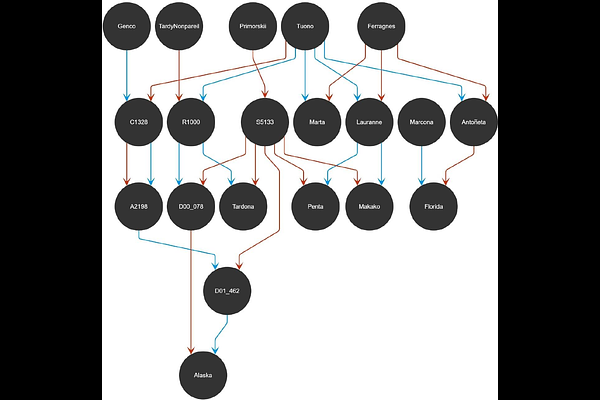Dissecting the genetic architecture of flowering and maturity time in almond (Prunus dulcis): heritability estimates and breeding value predictions from historical data

Dissecting the genetic architecture of flowering and maturity time in almond (Prunus dulcis): heritability estimates and breeding value predictions from historical data
GOMEZ ABAJO, M. D. M.; Dicenta, F.; Martinez-Garcia, P. J.
AbstractAlmond (Prunus dulcis) is a major nut crop with high genetic complexity due to its heterozygosity and self-incompatibility. In this study, genetic parameters for flowering and maturity time, two key complex traits in almond breeding, were estimated using classical methods (midparent-offspring regression and between/within family variance components) as well as a Bayesian linear mixed model. A comprehensive dataset from the CEBAS-CSIC Almond Breeding Program (CC-ABP), comprising over 17,500 individuals and more than 30 years of historical phenotypic records, was used to generate the first complete pedigree and evaluate trait inheritance. Narrow-sense and broad-sense heritability estimates were obtained, showing substantial variation across traits and methods, with the highest values derived from classical approaches. Bayesian mixed models, implemented via the MCMCglmm R package, allowed for the estimation of breeding values (EBVs), repeatability, and variance components under unbalanced data conditions. Repeatability estimates ranged from 0.15 to 0.56. EBVs were calculated for all individuals, including those without phenotypic records, enabling the construction of trait-specific rankings for early or late flowering and maturity. Reliability values were used to refine these rankings, improving the accuracy of parental selection. Genetic trends based on EBVs revealed changes in breeding objectives over time and highlighted the limited genetic progress achieved through phenotypic selection alone. The integration of the complete pedigree, EBVs, and trait rankings offers a robust framework to optimize crossing strategies. This work lays the groundwork for incorporating genomic selection into future almond breeding efforts, improving selection efficiency for traits of agronomic importance.